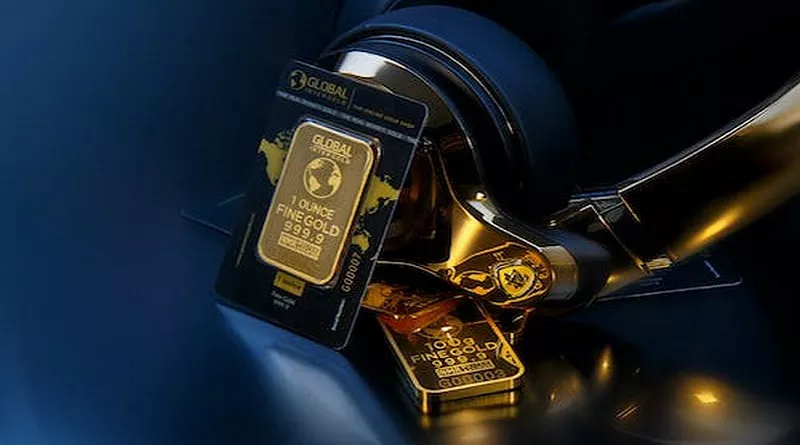The history of spot gold prices is a fascinating journey through time, reflecting the dynamic interplay of economic, geopolitical, and financial forces. Gold, often referred to as the “king of metals,” has captivated human civilizations for millennia due to its rarity, beauty, and intrinsic value. In this article, we will explore the important milestones and key events in the history of spot gold prices, tracing its path from ancient civilizations to modern financial markets.
Ancient Origins: Gold as Currency
The use of gold as a form of currency dates back to ancient civilizations, with the first documented use of gold coins occurring in 600 BC in what is now modern-day Turkey. These early coins, often made of electrum (a natural alloy of gold and silver), set the stage for gold’s role as a medium of exchange.
The Gold Rushes: 19th Century
The 19th century witnessed significant gold discoveries, particularly in the United States and Australia. The California Gold Rush of 1848-1855 and the subsequent Klondike Gold Rush of the late 19th century had a profound impact on the global supply of gold, leading to a surge in the availability of the metal.
The Gold Standard: 19th-20th Century
During the 19th century, many countries adopted the gold standard, where their currencies were backed by and convertible into a fixed amount of gold. The adoption of the gold standard provided stability to international trade and finance, as currencies were directly linked to a tangible asset.
The Great Depression and the End of the Gold Standard: 20th Century
The global economic turmoil of the Great Depression in the 1930s prompted many countries to abandon the gold standard to stimulate their economies. In the United States, President Franklin D. Roosevelt issued an executive order in 1933 that effectively confiscated gold held by private citizens and prohibited private ownership of gold coins, bars, and certificates. The gold standard’s final blow came with the Bretton Woods Agreement in 1944, which established the U.S. dollar as the world’s primary reserve currency, backed by gold.
The Nixon Shock: 1971
In 1971, President Richard Nixon took the historic step of ending the U.S. dollar’s convertibility into gold, effectively severing the last ties between major currencies and the precious metal. This event, known as the “Nixon Shock,” marked the beginning of the modern era of floating exchange rates and fiat currencies.
Gold’s Resurgence: Late 20th Century
The late 20th century saw a resurgence in gold prices as inflation, geopolitical tensions, and financial uncertainty drove demand for the precious metal. The Iranian Revolution in 1979 and the Iran-Iraq War in the 1980s, coupled with high inflation in the United States, contributed to a sharp rise in gold prices.
The New Millennium: Record Highs and the Financial Crisis
In the early 2000s, gold prices entered a sustained bull market. The dot-com bubble burst in 2000, and the 2007-2008 global financial crisis further fueled demand for gold as a safe-haven asset. In 2011, gold reached an all-time nominal high of over $1,900 per ounce.
Post-Financial Crisis and Beyond: A Volatile Decade
The decade following the financial crisis was marked by economic uncertainty, central bank policies, and geopolitical tensions, leading to significant price swings in the gold market. While gold experienced periods of strength, it also faced periods of consolidation and price corrections.
The COVID-19 Pandemic: 2020 and Beyond
The COVID-19 pandemic, which began in late 2019, had far-reaching effects on the global economy. As uncertainty grew and central banks implemented unprecedented stimulus measures, gold once again emerged as a safe-haven asset. In August 2020, gold reached new all-time highs, surpassing its 2011 peak.
FAQs About Spot Gold Price History
1. Why is gold considered valuable throughout history?
Gold has been prized for its rarity, durability, and intrinsic beauty. It does not corrode or tarnish, making it an enduring symbol of wealth and value.
2. What factors influence spot gold prices today?
Spot gold prices are influenced by a combination of factors, including supply and demand dynamics, economic data, geopolitical events, central bank policies, and currency fluctuations.
3. Can individuals invest in physical gold today?
Yes, individuals can invest in physical gold through the purchase of gold coins, bars, or jewelry. They can also invest indirectly through gold exchange-traded funds (ETFs) or futures contracts.
4. How has gold’s role evolved in the modern financial system?
While gold no longer plays a central role in the global monetary system, it continues to serve as a store of value, a hedge against inflation, and a safe-haven asset in times of economic uncertainty.
5. What are the potential risks of investing in gold?
Investing in gold carries risks, including price volatility, storage costs, and the potential for capital loss. It’s important for investors to assess their risk tolerance and consider diversification.
In conclusion, the history of spot gold prices is a testament to the enduring allure of this precious metal. From its early use as currency to its role in modern investment portfolios, gold has maintained its position as a symbol of wealth, value, and stability. Understanding the key milestones and events in gold’s history can provide valuable insights for investors and enthusiasts alike as they navigate the ever-evolving landscape of the gold market.
.

